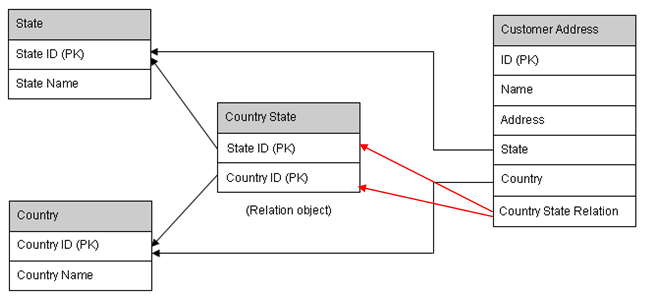Passive Constraints
A passive constraint is a property of the foreign key. You can create a passive constraint by configuring the foreign key in such a way that it restricts the data entry to valid combinations only.
The setup of passive constraints requires a relation object. This object also requires foreign key constraints to the individual entities. The constraint defined as the passive constraint must be displayed as a lookup (pop-up). Also, the foreign key constraints of columns referenced by the passive constraint must be displayed as lookup.
For example, the configuration must be as follows.

Country State is the relation table which has the foreign key constraints to the tables State and Country.

State and Country columns in Customer Address hold separate foreign key relationships to the tables State and Country.

Country State Relation column in Customer Address is the passive constraint.
After the configurations are set up, while entering the data for a customer address, if you select the Country as US, then only the states within US are available to select. Similarly, if you select a State only the corresponding Country is available to select.
